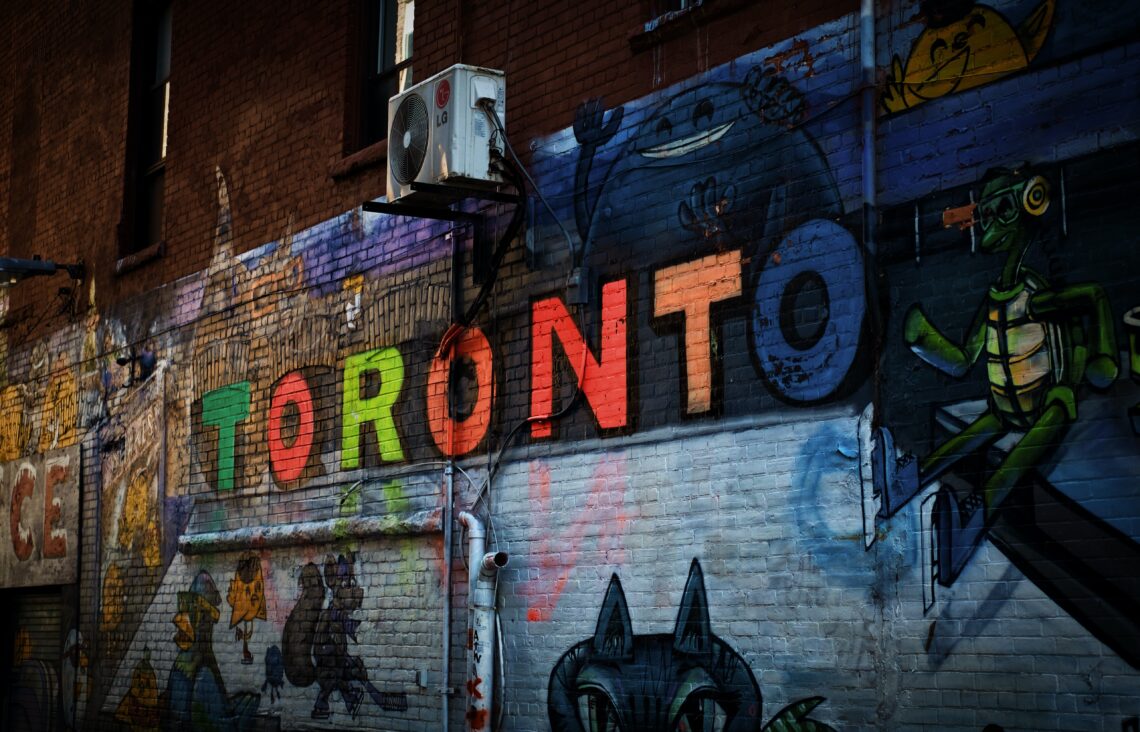
Blurred lines
Whenever long-time North York resident Cindy Luong passes by one of the many decorated graffiti pockets that can be found within Toronto-based neighbourhoods, she feels a sense of warmth.
“I see graffiti as a form of personal expression,” she says. “It brings me lots of happiness to see how someone can take a blank canvas, such as the side of a building, and create something that speaks to them and to others as well.”
Luong’s opinions represent one half of the continuous debate surrounding graffiti and whether it should be classified as art or as vandalism. While some like Luong can appreciate the artistic merit within graffiti, others paint it in a more negative light.
The official website for the City of Toronto states that graffiti can promote a belief that community laws protecting property can be disregarded, which can subsequently manifest in a sense of disrespect for property and result in an increase in crime.
Sustainable Thinking and Expression on Public Space (STEPS) Public Art is a cultural organization that works to foster inclusivity within urban communities through public art installations and creative placemaking. Alexis Kane Speer, executive director of STEPS, says part of the division stems from the fact that graffiti is an umbrella term that is often utilized to talk about anything that is painted or applied within a public realm—with or without permission.
She views graffiti as a spectrum, one that contains street art and murals but can also include tagging and activist intervention. She also highlights that while STEPS Public Art does not promote graffiti vandalism, there is a long and important history embedded within graffiti that needs to be included within discussions around the topic.
“Graffiti and the idea of tagging has come from mostly marginalized communities where people were taking and applying their name onto a space to say ‘I was here,’ when they weren’t being heard otherwise,” she says. “I think it’s important to acknowledge that that’s where all of street art has come from.”
Certain sectors within Toronto that encompass previous hotspots for unsanctioned graffiti have been reclassified as culturally significant. One example is Graffiti Alley, located within the city’s Fashion District, which has long been regarded as one of the best showcases of Toronto graffiti culture.
It also demonstrates the activism embedded within graffiti, a notable example being the 2020 mural project, “Paint the City Black.” This was a collective artistic initiative to show support for the Black Lives Matter Movement by memorializing George Floyd, Breonna Taylor, Regis Korchinski-Paquet and other victims of police brutality.
In 2011, after a lengthy battle with the city, the Queen Street West Business Improvement Association officially designated the area as holding municipal significance. This also inspired the creation of StreetARTToronto, a program that works to secure funding and approval for street art.
It was an important moment for graffiti as it acknowledged its immense contribution within the cultural development of urban spaces, Kane Speer notes.
“If we think of cities 50 years ago and what it would be like to walk down the street in comparison to cities today, I would say there’s quite a significant cultural shift that has happened as a result of street art in the way we experience a Canadian city,” she says.
Luong also says she appreciates graffiti’s impact on the cultural evolution within Toronto, which is why she ultimately believes that there isn’t a clear way to differentiate between street art and graffiti because they both promote cultural, artistic and community engagement.
“Art is an outlet for people to express their inner emotions—graffiti is no different,” Luong says. “There is raw emotion immersed within every spray of the artist’s can—it’s just on a building instead of hanging in a gallery.”
About the author
Olivia Matheson-Mowers is a former reporter for Youth Mind. When she’s not writing, or playing with her cat, Daisy, you can find her curled up in her heated blanket watching seasons 1-6 of Dragon Ball Z and complaining about seasons 7-9.







